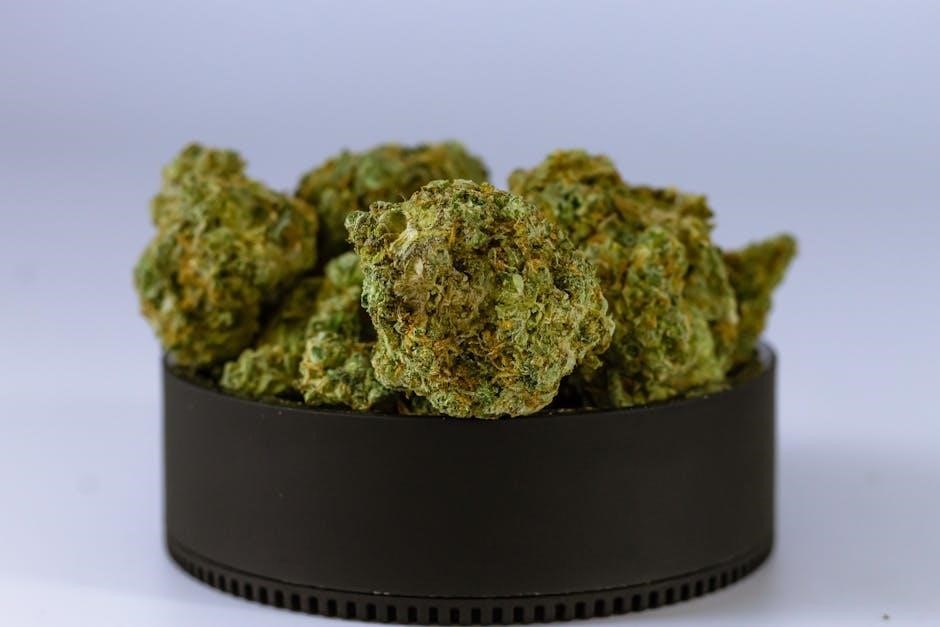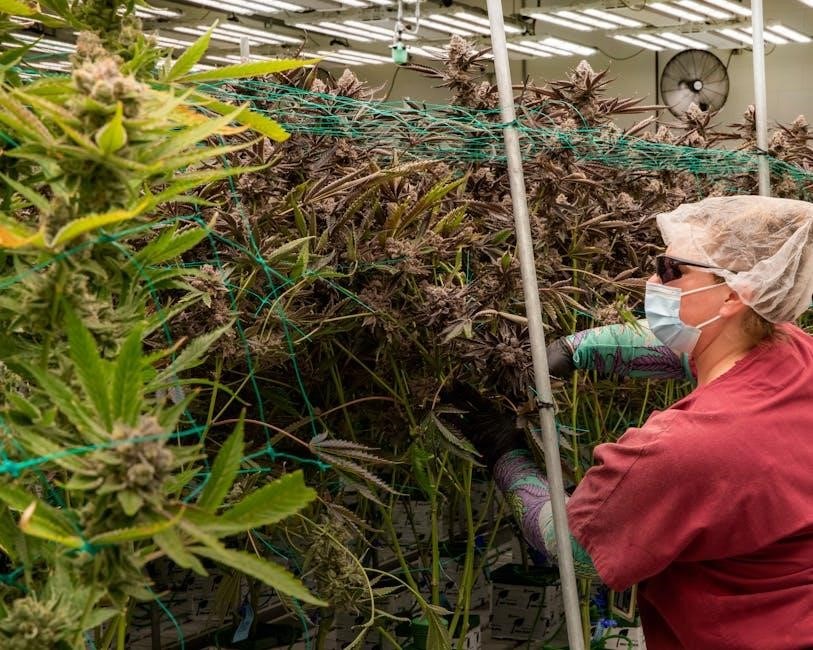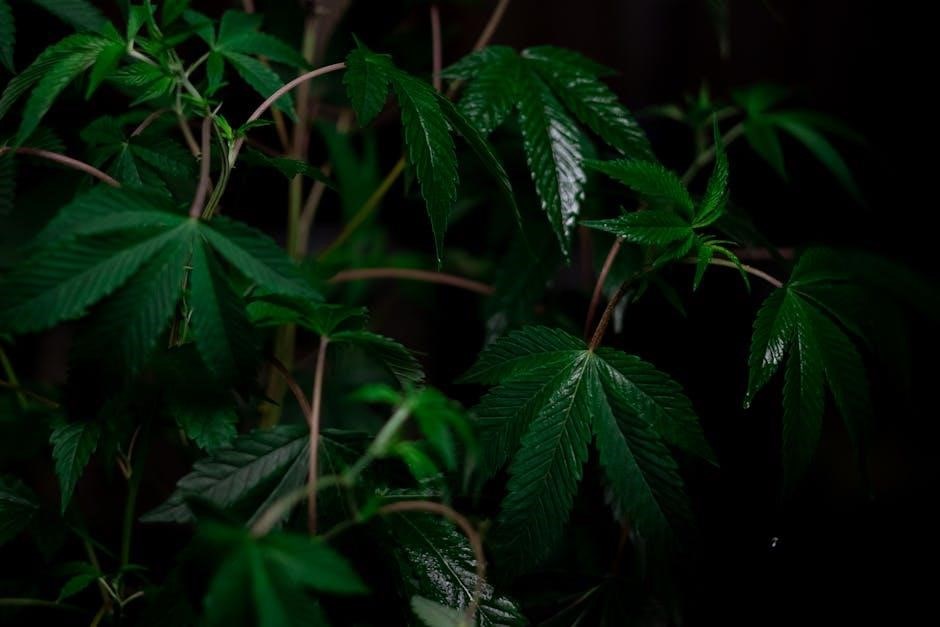
Growing marijuana hydroponics requires research and planning, start with
- basic steps
and understand the process, then proceed with caution and patience, using a
hydroponic system
for optimal results always․
Understanding the Basics of Hydroponic Gardening
Hydroponic gardening is a method of growing plants using a nutrient-rich solution rather than soil․ This method allows for more control over the growing conditions and can result in healthier and more productive plants․ To understand the basics of hydroponic gardening, it is essential to learn about the different types of hydroponic systems, including drip irrigation, ebb and flow, and nutrient film technique․ Each system has its own advantages and disadvantages, and the choice of system will depend on the specific needs of the plants and the grower․ A hydroponic system typically consists of a reservoir, pump, and tubing, and may also include additional components such as aeration systems and heating or cooling systems․ By understanding how these components work together, growers can create an optimal environment for their plants to thrive․ Hydroponic gardening also requires a basic understanding of plant nutrition and how to provide the necessary nutrients for healthy growth․
Benefits of Hydroponic Gardening for Marijuana
Hydroponic gardening offers several benefits for growing marijuana, including increased yields and faster growth rates․ This method allows for more control over the growing conditions, resulting in healthier and more productive plants․ Hydroponic systems can also help to reduce the risk of soil-borne diseases and pests, which can be a major problem for marijuana growers․ Additionally, hydroponic gardening can help to conserve water and reduce the environmental impact of growing marijuana․ By using a nutrient-rich solution rather than soil, growers can also reduce the amount of waste generated by their operation․ Overall, hydroponic gardening can be a highly effective and efficient way to grow high-quality marijuana․ With the right equipment and techniques, growers can produce large quantities of potent and flavorful buds․ Hydroponic gardening also allows for year-round cultivation, regardless of the season or climate․ This can be especially beneficial for commercial growers who need to meet a consistent demand for their product․

Setting Up a Hydroponic System for Marijuana
Setting up a system requires careful planning and
- research
to ensure optimal results and a successful harvest always using a hydroponic system․
Choosing the Right Equipment and Nutrients
To ensure a successful harvest, it is essential to choose the right equipment and nutrients for your hydroponic system․ This includes a suitable grow medium, such as rockwool or clay pebbles, and a reliable nutrient solution․ The nutrient solution should be specifically formulated for hydroponic growing and should contain the necessary macronutrients and micronutrients for optimal plant growth․ A pH test kit and a thermometer are also necessary to monitor the pH and temperature of the solution․ Additionally, a good quality air pump and air stones can help to oxygenate the solution and promote healthy root growth․ It is also important to consider the size and type of equipment needed, such as a reservoir and a pump, to ensure that the system is scalable and efficient․ By choosing the right equipment and nutrients, you can create an optimal growing environment for your marijuana plants and achieve a bountiful harvest․ Using a hydroponic system can be a great way to grow marijuana․
Legal Considerations for Growing Marijuana
Before starting a hydroponic marijuana grow, it is crucial to understand the legal considerations involved․ Marijuana laws vary by country, state, and even municipality, so it is essential to research and comply with local regulations․ Some areas have strict laws prohibiting marijuana cultivation, while others have more lenient laws or even allow recreational use․ It is also important to consider the quantity of marijuana being grown, as this can impact the legality of the operation․ Additionally, growers should be aware of any necessary permits or licenses required to cultivate marijuana in their area․ A thorough understanding of the legal framework surrounding marijuana cultivation can help growers avoid potential pitfalls and ensure a successful and lawful operation․ By taking the time to research and understand the legal considerations, growers can minimize the risk of legal issues and focus on producing a high-quality crop; Legal compliance is essential for a successful grow․

Best Practices for Growing Marijuana Hydroponically

Using a
- well-designed system
and following proper
guidelines
ensures optimal results and healthy plants always․
Optimizing Growing Conditions
To optimize growing conditions for marijuana hydroponics, it is essential to consider factors such as temperature, humidity, and light․ A well-designed hydroponic system should include a temperature control system to maintain a consistent temperature between 65-75 degrees Fahrenheit․ Humidity levels should also be monitored and maintained between 40-60 percent․ Lighting is another critical factor, and marijuana plants require a lot of light to grow․ Using LED grow lights or other high-intensity lighting can help promote healthy growth and maximize yields․ Additionally, ensuring good air circulation and ventilation is crucial to prevent the buildup of CO2 and maintain a healthy environment for the plants․ By optimizing these growing conditions, growers can increase the chances of a successful harvest and maximize the potency and quality of their marijuana․ Proper optimization of growing conditions can also help prevent common problems such as root rot and nutrient deficiencies․ Regular monitoring and adjustments can help identify and address any issues before they become major problems․
Minimizing Odors and Discreet Cultivation
Minimizing odors and discreet cultivation are crucial aspects of growing marijuana hydroponics, especially for indoor growers․ Using a carbon filter with a good ventilation system can significantly reduce odors and prevent them from spreading․ Some growers also use air purifiers and carbon filters when harvesting and trimming their plants to minimize the smell․ A well-designed hydroponic system should include odor-control measures to prevent the smell of marijuana from becoming a nuisance․ Additionally, using odor-absorbing materials such as activated carbon or zeolite can help minimize odors․ Discreet cultivation can be achieved by using a grow tent or a stealth grow box that is designed to blend in with the surrounding environment․ By minimizing odors and using discreet cultivation methods, growers can reduce the risk of detection and ensure a successful harvest․ Proper odor control and discreet cultivation can also help prevent complaints from neighbors and ensure a peaceful growing experience․ Regular maintenance and monitoring can help identify and address any odor-related issues․
Final thoughts on growing marijuana hydroponics include
- key takeaways
and future considerations for successful cultivation always using a
hydroponic system
․

Getting Started with Growing Marijuana Hydroponically
To begin growing marijuana hydroponically, it is essential to start with the basics, including understanding the different types of hydroponic systems and choosing the right equipment for your needs․ A hydroponic system can be as simple or as complex as you want it to be, depending on your level of experience and the amount of space you have available․ You will need to consider factors such as lighting, temperature, and humidity when setting up your system․ It is also crucial to research and understand the local laws and regulations regarding the cultivation of marijuana in your area․ By taking the time to properly plan and set up your hydroponic system, you can ensure a successful and bountiful harvest․ Using a hydroponic system can be a rewarding and enjoyable experience, allowing you to grow high-quality marijuana while minimizing waste and maximizing efficiency․